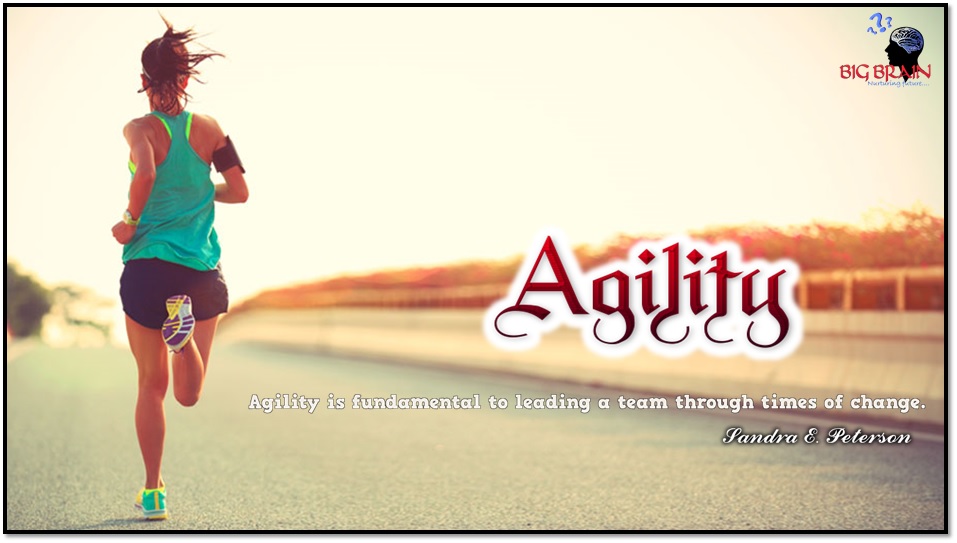Definition of Agility
Agility is the ability to move quickly and easily, adapt to changing conditions, and respond effectively to new challenges. It is commonly associated with physical prowess, but its meaning has expanded to encompass a broader range of fields, including business, software development, personal development, and leadership. In all contexts, agility reflects a combination of flexibility, speed, precision, and the capacity for quick decision-making.
Types of Agility
1. Physical Agility
Physical agility refers to the capacity of an individual to move their body with speed, coordination, and control. It is an essential attribute in sports, fitness, and various physical activities. Training for physical agility focuses on enhancing balance, strength, coordination, and reflexes. It can be measured and improved through exercises such as:
- Ladder drills (footwork)
- Cone drills (directional change)
- Plyometrics (explosive movements)
- Balance exercises
Physical agility is critical for athletes in sports like football, basketball, tennis, and gymnastics, where quick directional changes and rapid movements are needed.
2. Mental Agility
Mental agility refers to the ability to think and reason quickly and adaptively. A mentally agile person can process new information rapidly, make decisions under pressure, and switch between tasks effectively. This type of agility is vital in problem-solving, critical thinking, and learning new skills.
- Flexibility of thought: The ability to consider multiple solutions or approaches.
- Cognitive switching: Transitioning smoothly between different tasks or concepts.
- Stress management: Maintaining clarity under pressure.
Mental agility is essential in fields that require quick thinking, such as emergency medicine, business leadership, and creative arts.
3. Organizational Agility
In business and organizational contexts, agility refers to a company’s or team’s ability to rapidly adapt to market changes, customer needs, or disruptive technologies. In today’s fast-paced business environment, agility is a core factor in long-term success.
There are three key components of organizational agility:
- Operational agility: The ability to make internal processes faster and more efficient.
- Strategic agility: The ability to foresee changes in the market and re-align strategies proactively.
- Portfolio agility: The ability to shift resources, such as capital or talent, towards more lucrative opportunities when needed.
Agile organizations maintain flexibility, encourage innovation, and have strong leadership that promotes a culture of adaptability.
Key Components of Agility
Regardless of the field, agility is characterized by a few core components:
- Speed: The ability to act quickly is fundamental to agility, allowing rapid responses to both opportunities and threats.
- Flexibility: This refers to the capacity to change direction, approach, or strategy with ease.
- Balance: Whether it’s physical, mental, or organizational, maintaining stability while moving or transitioning is essential.
- Precision: Agile responses are not only fast but also accurate, ensuring that actions lead to positive outcomes.
- Awareness: Agile individuals or organizations must be aware of their surroundings, anticipating changes before they occur.
Applications of Agility
1. In Sports
Athletes train to improve agility, as it is crucial for enhancing performance in sports that demand quick reactions and the ability to change direction rapidly. Sports like soccer, basketball, tennis, and hockey are prime examples where agility can make the difference between success and failure. Physical agility drills aim to improve reflexes, quick thinking, and movement efficiency.
2. In Software Development (Agile Methodology)
The concept of agility has also been integrated into software development through the Agile methodology. Agile software development emphasizes iterative progress, collaboration, flexibility, and the delivery of small, functional components rather than following a strict, linear process. Agile frameworks like Scrum and Kanban are widely used in this context.
Key principles of Agile software development:
- Customer collaboration over contract negotiation.
- Responding to change over following a rigid plan.
- Working software over comprehensive documentation.
3. In Business
Organizational agility has become a strategic priority for many businesses. In an era of rapid technological advancement, companies must be able to pivot in response to new trends, customer demands, or unexpected crises. An agile organization encourages innovation, decentralizes decision-making, and promotes a culture of continuous improvement.
4. In Personal Development
On a personal level, agility refers to the ability to adapt to life’s challenges, overcome obstacles, and grow through adversity. Personal agility is about embracing change, continuously learning, and being willing to re-evaluate goals and strategies. It fosters resilience and enhances one’s capacity to thrive in dynamic environments.
Developing Agility
Agility is not an innate trait but one that can be cultivated with deliberate practice. Here are some ways to develop agility in different areas:
- Physical Agility: Engage in exercises that challenge coordination, balance, and reaction times. Multi-directional movement drills, balance training, and high-intensity interval training (HIIT) can help.
- Mental Agility: Practice problem-solving, learning new skills, and staying mentally flexible through puzzles, games, or learning new languages. Mindfulness and stress management techniques are also beneficial.
- Organizational Agility: Encourage a culture of innovation, decentralize decision-making, and create systems that allow for fast feedback loops. Leaders can foster this by promoting continuous learning and adaptability within teams.
- Agile Software Development: Adopt Agile frameworks like Scrum or Kanban. Focus on collaborative teams, short development cycles, and continuous testing and iteration.
Conclusion
Agility is a valuable trait in many areas of life, from physical performance to strategic business operations. It involves the ability to move quickly and efficiently in response to changing circumstances. Whether it’s enhancing personal resilience, leading a company through market shifts, or developing software that adapts to user needs, agility allows individuals and organizations to thrive in dynamic, unpredictable environments.
By understanding the different types and components of agility, you can cultivate it in your own life or business, ensuring that you are always ready for the next challenge.

